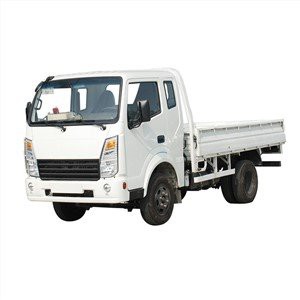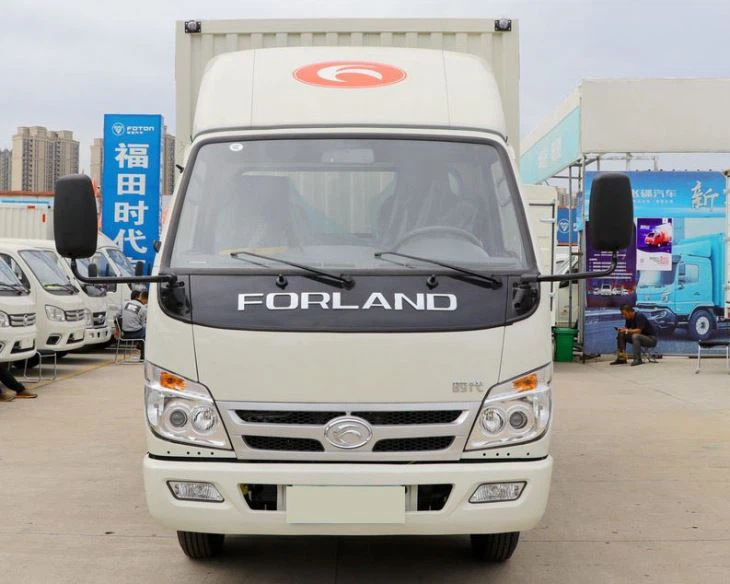The Trash Truck: A Comprehensive Guide to Understanding Waste Collection Vehicles

When you see a trash truck making its rounds in your neighborhood, it’s easy to overlook the engineering marvel and vital service it represents. This article delves into various aspects of trash trucks, including their types, functions, and the importance of waste management.
Introduction to Trash Trucks
Trash trucks, also known as garbage trucks, are specialized vehicles designed for collecting, transporting, and disposing of waste. They play a crucial role in keeping our communities clean and managing waste effectively. With increasing concerns about sustainability and recycling, understanding how trash trucks operate can help us appreciate their significance in modern waste management systems.
Types of Trash Trucks
Various types of trash trucks are used around the world, each tailored to different waste collection needs. Here are the most common types:
1. Rear-Loader Trash Trucks
Rear-loader trash trucks have a loading area at the back. Operators typically collect waste using a mechanical arm or manually load trash into the truck. This type is widely used for residential areas.
Advantages of Rear-Loader Trash Trucks
- Compact design allows access to narrow streets.
- Efficient for residential collection.
2. Front-Loader Trash Trucks
Front-loader trucks have forks at the front that lift waste bins directly into the truck. They are primarily used for commercial waste collection, such as in businesses and industrial areas.
Advantages of Front-Loader Trash Trucks
- Can handle larger volumes of waste.
- Faster collection process in commercial settings.
3. Side-Loader Trash Trucks
Side-loader trucks feature a collection arm on the side, allowing for automated collection of waste bins. They are popular in residential areas where automated collection is preferred.
Advantages of Side-Loader Trash Trucks
- Reduces labor costs with automation.
- Increases safety by minimizing worker exposure to traffic.
4. Compactor Trucks
Compactor trucks are equipped with compacting mechanisms that compress waste, increasing the amount of material carried. This is particularly useful in areas with space constraints.
Advantages of Compactor Trucks
- Higher capacity reduces the number of trips needed.
- Improves efficiency in waste collection.
Components of a Trash Truck
A typical trash truck comprises several important components that work together to ensure effective waste collection:
1. Chassis
The chassis is the vehicle’s frame, supporting various components, including the engine, axles, and wheels. Trash trucks are built with heavy-duty materials to handle the demanding workload.
2. Compaction Mechanism
This component compresses the waste, allowing more waste to fit into the truck. It typically includes hydraulic cylinders and a compaction plate.
3. Loading Mechanism
Depending on the type of truck, the loading mechanism could be manual (like a rear-loader) or mechanical (like a side-loader and front-loader).
4. Storage Compartment

This is the main body of the truck where waste is stored. Its design can vary, including different shapes and sizes to accommodate various waste types.
How Trash Trucks Work
The operation of a trash truck is straightforward but involves several steps to maintain efficiency and safety:
1. Planning the Route
Before collection begins, waste management companies plan efficient routes to minimize fuel consumption and maximize time savings.
2. Collection Process
Once on the route, drivers stop at designated pickup points. They either manually or automatically load the waste into the truck.
3. Compaction
As waste is loaded, the compaction mechanism activates, compressing the waste to make space for more.
4. Transportation to Landfill or Recycling Center
After collecting all designated waste, trucks transport the load to a landfill or recycling facility for proper processing.
Maintaining Trash Trucks
Regular maintenance is crucial for the longevity and efficiency of trash trucks. Here are some important maintenance considerations:
1. Routine Inspections
Daily pre-operation inspections help identify any issues before they become serious problems. This includes checking fluid levels, brake systems, and compaction mechanisms.
2. Cleaning
Regular cleaning prevents odor build-up and maintains hygiene, especially given the nature of the materials being collected.
3. Scheduled Repairs
Maintenance schedules should be adhered to for parts replacements, oil changes, and other necessary repairs to ensure the vehicle operates optimally.
The Importance of Trash Trucks in Waste Management
Trash trucks play a pivotal role in waste management, affecting both environmental and public health. Here are some key points to consider:
1. Keeping Communities Clean
By collecting waste regularly, trash trucks prevent the accumulation of litter, keeping neighborhoods clean and attractive.
2. Reducing Environmental Impact

Effective waste collection prevents illegal dumping, which can lead to environmental degradation. Trash trucks ensure waste is disposed of properly, reducing pollution.
3. Promoting Recycling

Many trash trucks are outfitted with separate compartments for recyclables, promoting the recycling process and contributing to waste reduction efforts.
Understanding Trash Truck Regulations
Trash trucks are subject to numerous regulations to ensure safety and efficiency on the roads. Here’s an overview of key regulations:
1. Weight Limits
Each jurisdiction has weight limits that trash trucks must adhere to, ensuring road safety and minimizing wear and tear on infrastructure.
2. Environmental Regulations
Many regions have guidelines on emissions and the types of waste that can be transported, aiming to protect the environment.
3. Safety Standards
Operational safety standards are in place to protect drivers and pedestrians, including proper signage and safety equipment on the trucks.
Future Innovations in Trash Truck Technology
As waste management continues to evolve, innovation in trash truck technology is on the rise. Here are some promising developments:
1. Electric Trash Trucks
Electric trash trucks are being developed to reduce emissions and fuel costs. These vehicles promise to be quieter and more environmentally friendly.
2. Automated Collection Systems
Advancements in robotics have led to fully automated waste collection systems, decreasing reliance on manual labor and increasing safety.
3. Smart Routing
GPS and IoT technology are being integrated into trash trucks to optimize routes in real-time based on traffic conditions and waste levels.
Practical Tips for Residents
Residents can play a role in improving waste management in their communities by following these practical tips:
1. Proper Waste Segregation
Always segregate waste into recyclables, compostables, and general waste to ensure that trash trucks can process it efficiently.
2. Timely Disposal
Ensure that waste is disposed of during scheduled collection days to avoid overflow and littering.
3. Educate Others
Share information with your neighbors about proper waste disposal and recycling practices, promoting a cleaner community.
Frequently Asked Questions (FAQ)
1. What is the capacity of a standard trash truck?
A standard trash truck can carry anywhere from 10 to 30 cubic yards of waste, varying by type and design.
2. How often do trash trucks collect waste?
Collection frequency varies by municipality, but most residential areas have collections once or twice a week.
3. Can I request a special pickup for large items?
Yes, many waste management services offer bulk pickup days for large items. Check with your local waste management program for specifics.
4. What happens to waste after it’s collected by trash trucks?
After collection, waste is transported to landfills, recycling centers, or composting facilities, depending on the type of waste and local regulations.
5. Are trash trucks environmentally friendly?
Many modern trash trucks are designed with better fuel efficiency and emissions controls, and some are transitioning to electric models to reduce their environmental impact.
6. How can I report a missed trash pickup?
If your trash wasn’t picked up, contact your local waste management service promptly to report the issue and see if arrangements can be made for a pickup.
